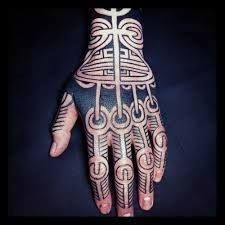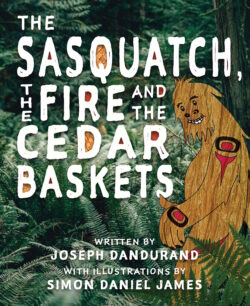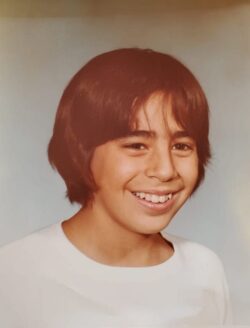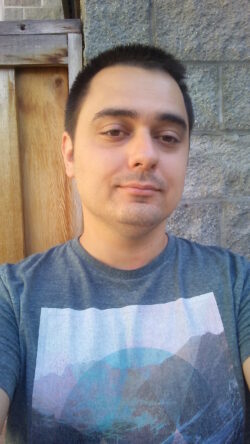1221 Dandurand in tandem
Two books reviewed by Harper Campbell:
SH:LAM (The Doctor)
by Joseph Dandurand
Toronto: Mawenzi House, 2020
$19.95 / 9781988449715
*
The Sasquatch, the Fire and the Cedar Baskets
by Joseph Dandurand, illustrated by Simon Daniel James
Gibsons: Nightwood Editions, 2020
$14.95 / 9780889713765
*
 Joseph A. Dandurand is a man of many roles. A member of the Kwantlen First Nation, he directs the Kwantlen Cultural Centre there; as an educator he has worked with local school districts, and as a storyteller he has partnered with the Vancouver Public Library. He is also artistic director of the Vancouver Poetry House, although in an interview he has said he is “not part of the poetry community.”
Joseph A. Dandurand is a man of many roles. A member of the Kwantlen First Nation, he directs the Kwantlen Cultural Centre there; as an educator he has worked with local school districts, and as a storyteller he has partnered with the Vancouver Public Library. He is also artistic director of the Vancouver Poetry House, although in an interview he has said he is “not part of the poetry community.”
But it’s as an author that he appears before us today. Dandurand has been writing plays and poetry since the 1990s and has amassed a fairly lengthy bibliography. Just recently his book The East Side of It All was shortlisted for the prestigious Griffin Poetry Prize. I have before me Sh:Lam (The Doctor), his previous poetry collection, and a children’s book entitled The Sasquatch, the Fire and the Cedar Baskets.
Sh:Lam is a book of poetry with a concept, perhaps even a plot line. It concerns a man, a Healer, whose existence spans across time and cosmos. You won’t find a more succinct explanation than in the first poem, “Doctor”:

I guess I am the same man
I was when I discovered who I am
and exactly what it is that I can do.
They, the people of the river,
had a word for me: Sh:Lam
and in English it meant: Doctor.
I remember centuries ago when
the river flowed just like it does today
there were a people who were burning
from the inside out
and they called it smallpox
but it was the most painful way
to see the other side
and I came from a cedar tree
where I had been listening
and crying as the children
of our river people began
to cough and I came and told
the people to give me fire
and I would eat the flames
and as I did the sickness
entered me and erupted
from the inside out
as flames burned the memories
of our all
of our illness
and I walked back and went up
to the top
of that cedar tree
and there I became again
a Sh:Lam
and I sat and I sat
for another century
as the world changed
and our people changed
and now I am here
in this city
in a place they call the Eastside
as the heroin
burns
our people
from
the inside
out.

What follows this introduction is a mesmerizing whirl of images as the Doctor spins through time and touches on the deep powers of the universe. Past and present, pain and transcendence bleed into each other. The reader skips like a stone through the procession of experiences, each contextualizing the others, drawing us into a world where deep suffering shares the stage with joy and pride.
For example, let me contrast a couple of the poems. In “Healers made of stone,” we enter a kind of sacred time:
The three of us appeared
from the sky over ten
thousand years ago.
I was a man and they both were
very powerful women
and I do not think
they liked me much
as they would hold hands
and laugh when they would
make ice disappear
and I would try and anger them
as I whispered the word: allow
and a river would appear
filled with fish.
That’s only the opening of the poem. But then in “Enter the transparent,” we’re in the present (I quote the entire poem):
I am now a drunk living
on the streets of any city’s
skid row.
With me are characters from
any great novel and we sip
the whiskey bottle as if it is
the last object to touch
our lips and the characters
perform for me to the sounds
of any great symphony
and they dance ballet
leaping over the filth
and the mayhem.
I begin to write poems
on slips of welfare cheques
and dirty napkins and the
poems flow onward from a
broken pencil to the lines
of the gods who are here
to see the show.
In my twilight of being a drunk
I am too weak now to write
and some of the characters
have placed a plastic blanket
over me and later that night
I arise somewhat like Jesus did
as he danced across the filth
and when I leave to go
up into the air and somewhere
along the way they gave me wings
and written on the wings
were all my poems
and as we came nearer to
the sun
I watched
my wings
my words
burn.
Perhaps now you’re getting a sense of Dandurand’s strengths as a poet. He knows how to get powerful effects from simple, everyday words, just by placing them the right way. Few of his lines are showy and he rarely brings in outlandish metaphors or imagery; instead he builds up details in the manner of a storyteller until the total effect becomes very subtle and moving. His rhythms are also the rhythms of a storyteller, without jarring enjambments and with a lot of repetitions of the word “and,” and although I’ve never heard them aloud I can see that they would read a lot more smoothly than most poetry.


I finished the book with a sense that its main message was about the context of your struggle. A lot of people get stuck in the situations Dandurand describes — addiction, homelessness, chronic poverty, violence — and feel consumed by a very individual sense of shame or failure. Dandurand provides a context that illuminates the systemic side of these experiences, their connection to colonial histories. At the same time he anchors the suffering in a larger context of joy, pride, and wonder. He replaces the vacuum of suffering with a framework of meaning. That’s the message I got from it, and that’s something that leaps over the conventional bounds of poetry into something deep and healing.
As an aside, we’re in a moment when teachers are trying to incorporate Indigenous texts and content into the classroom, and I think the poems in Sh:Lam would work great for this. Their language is accessible enough to teach to students as young as Grade 7 or 8, but there is enough to discuss to make them worth reading with students in Grade 12. The poems are also remarkably succinct — they telescope a lot of history and society into a page and a half, which makes them a valuable commentary on lessons from history and social studies, and a stirring pretext for further discussions. They could help students both Indigenous and settler to locate themselves in the past 200 years of history, especially in BC’s Lower Mainland.
On the whole the structure of the book works, with its recurring motifs and blending of times together, but there are downsides too. Sometimes as a motif gets repeated, what started out as a crisp moment in one poem becomes blurred through repetition. It also encourages you to compare the poems that tackle similar subjects as if they were in competition with each other. As a consequence the end didn’t feel as strong as the beginning, more of a faded repeat than a real conclusion.
I want to include one last poem in this review, perhaps my favourite one, “The shine brings you home.” Its subject is MMIWG2S,[1] so some of the imagery is disturbing:
I have changed and find myself
on a highway wetted with the
tears of our lost.
I am here to meet the man
who has taken all the women
and has put them
on the side of the road
in a puddle
by a tree
in a ditch
or slowly floating
to the bottom
of a creek.
I get a ride and I remember
the truck in every detail
and the smells of the dead
encircle this man as he
smokes and opens his window
he never looks at me.
I do not see fear or sorrow
from this man and he is
not from here
so he says
and he tells me of his family
his children
and the cost
of gasoline.
I look at him as he
appears to be on fire
and the heat of him
begins to burn my fingers
as I reach out and touch him
and all he sees and has seen
evaporates into a hot mist
and falls out the window as he
blows smoke from his
cigarette out into the
world he has forsaken
and when I get out
of the truck he waves
a tattooed arm at me
as the medicine
I have given him
begins to carry into his blood
and all the women circle
around him and they cry
and they scream
and it is the screams
that envelope him
and he accepts
the disease I have given him
by the touch of my hand
I have erased him
as the women cry
and scream
and this opens
up the sky
as the
shine
brings
you
home.

*
 Now to turn to The Sasquatch, the Fire and the Cedar Baskets. There is less to say about this short children’s book. The story concerns a Sasquatch who grows up alone, finds food and shelter, and eventually gets together with another Sasquatch to start a Sasquatch family. Then one day their happiness is threatened by a great forest fire. Our Sasquatch uses cedar baskets full of water to put it out and all is well again. The illustrations are provided by Simon Daniel James (Kwakwaka’wakw) who is a painter, carver, and the co-creator of Raven Tales.
Now to turn to The Sasquatch, the Fire and the Cedar Baskets. There is less to say about this short children’s book. The story concerns a Sasquatch who grows up alone, finds food and shelter, and eventually gets together with another Sasquatch to start a Sasquatch family. Then one day their happiness is threatened by a great forest fire. Our Sasquatch uses cedar baskets full of water to put it out and all is well again. The illustrations are provided by Simon Daniel James (Kwakwaka’wakw) who is a painter, carver, and the co-creator of Raven Tales.

The Sasquatch is most famous nowadays as a kind of urban legend (or perhaps “rural legend” would be more accurate). If you search for Sasquatch on Wikipedia it will redirect you to the page for Bigfoot, where the introductory paragraphs will make only a passing mention of Indigenous peoples and spend most of their time dwelling on cryptozoology, hoaxes, and the attempts of scientists to show if the Sasquatch is real or not. Settlers have put the Sasquatch in a lineup that includes UFOs, Nessie, and the Mothman and dissociated it from its original cultural context.
There have been a number of attempts in recent years to bring the Indigeneity of Sasquatches back into focus, the most prominent perhaps being Eden Robinson’s novel Monkey Beach. It will be beneficial if this book can reach younger readers and prime them to already think of Sasquatches in an Indigenous context.
The story itself is not especially gripping, though. The love-interest Sasquatch doesn’t appear until halfway through the book, and the eponymous fire only shows up in the last quarter. Most of the book is dedicated to things like this:

In the mornings, he awoke and walked down to the river…
He stood next to the great bears and fished alongside them. They never paid him much mind…
This went on all summer until the fish were no more, and then he swam back across the rivers and walked across the highest mountains…
I’m not sure how this will play out with kids. Some might be hankering for some plot, like I was, but if they were hooked on the idea of a Sasquatch, I think they will be excited to get all the details of a Sasquatch’s daily life.
As Jo-Ann Episkenew notes in her book Taking Back Our Spirits: Indigenous Literature, Public Policy and Healing (University of Manitoba Press, 2009), literature can be medicine that does more than simply entertain you or provide food for thought. It has a special power to leap beyond the merely fictional and change you and your relationships. Dandurand’s work contributes to this process of writing-as-medicine with books that are educational and healing.
*

Harper Campbell has published poetry in Salish Seas: An Anthology of Text + Image (Aboriginal Writers Collective West Coast, 2011), an essay in The Salt Chuck City Review (volume 1, 2019), and translations of the Indonesian poet Chairil Anwar in Columbia Journal (2021) and Ezra (forthcoming). He has an honours degree in philosophy and Asian studies from the University of British Columbia. Editor’s note: Harper Campbell has also reviewed books by Margaret Laurence, jaye simpson, and Joshua Whitehead for The Ormsby Review.
*
The Ormsby Review. More Books. More Reviews. More Often.
Publisher and Editor: Richard Mackie
The Ormsby Review is a journal service for in-depth coverage of B.C. books and authors. The Advisory Board consists of Jean Barman, Wade Davis, Robin Fisher, Cole Harris, Hugh Johnston, Kathy Mezei, Patricia Roy, Maria Tippett, and Graeme Wynn. Scholarly Patron: SFU Graduate Liberal Studies. Honorary Patron: Yosef Wosk. Provincial Government Patron since September 2018: Creative BC
“Only connect.” – E.M. Forster
Endnotes:
[1] MMIWG2S = Missing and Murdered Indigenous Women, Girls and Two-Spirit People. – Ed.
2 comments on “1221 Dandurand in tandem”